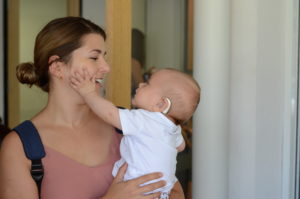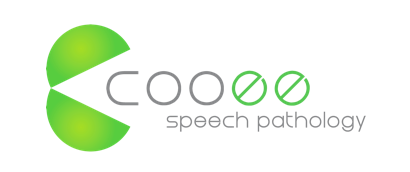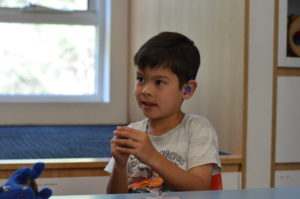What Is Auditory-Verbal Therapy? – A guest blog from the team at Hear And Say
Our friends at Hear and Say have written a wonderful guest blog for us this week on Auditory-Verbal Therapy.
Hear and Say has been a world-leading expert in hearing technology and listening and spoken language therapy for almost 30 years. Working across five centres in Queensland and through telepractice around the globe, Hear and Say shapes its work around the latest research and technology to best support the needs of children and adults impacted by hearing loss and other sensory concerns.

What is Auditory-Verbal Therapy?
Up to two babies in every 1,000 will be born with hearing loss in Australia each year, and this is a figure which doubles by school age.[1]
To maximise developing listening and speaking, children who are deaf or hard of hearing need a combination of early diagnosis; hearing technology such as hearing aids or cochlear implants; and specialised speech therapy called listening and spoken language therapy.
Amplification of sound through devices such as hearing aids or cochlear implants alone does not enable optimal speech development.[2]
Auditory-Verbal Therapy (AVT) is a family-based approach which focuses on teaching speech through listening rather than watching. This is done by stimulating the hearing system of the brain, enabling children to make meaning of what they hear and laying down neural pathways for speech and language development.[3]
In AVT, parents are supported and coached to teach their child who has a hearing loss to listen and to speak.
The changing face of hearing loss
As a result of universal newborn hearing screening in hospitals, babies in Queensland identified with hearing loss at birth now receive hearing amplification much earlier than previously.
In the majority of cases, babies are fitted with hearing aids within two months of diagnosis, and cochlear implants (where applicable) under the age of 12 months. Babies are also entering early intervention programs soon after birth, and this steady trend is anticipated to continue long-term. As such, these children are in the best position to receive maximum benefit from listening and spoken language intervention within the critical period of the brain’s development.
Queensland non-profit, Hear and Say is one of the leading paediatric AVT and implantable hearing technologies (including cochlear implants) organisations in the world. For almost 30 years, their team has worked with parents to help teach children who are deaf to hear, listen and speak.
Hear and Say’s listening and spoken language specialists work with each parent/carer and show them how to set up an optimal listening and learning environment in their everyday life, as well as activities to promote the development of their child’s spoken language through listening.
The program is designed to meet the needs of the child and follows the natural progression of language development. It consists of one-on-one therapy involving a listening and spoken language therapy specialist, together with the child and parent/s and/or carer/s. Activities are child-orientated, play-based and reflect each child’s developmental level.
This continues outside of the clinical setting, when the family is at home, or out and about, where an environment conducive to listening is essential. The parents/carers then support their children to practice their skills in the wider community. Time is always allocated as part of a child’s appointment for discussion, shared problem solving and future planning.
What research tells us
Research demonstrates that children with hearing loss in an AVT program: 
- Can graduate with no gap between their chronological and language ages and developed spoken language in line with typically-hearing peers.[4]
- Make, on average, 12 months progress in 12 months for their spoken language development, which is in line with expectations for children with normal hearing[5].
- Progress at the same rate for listening, speaking, self-esteem, reading and mathematics (as compared with a matched group of children with typical hearing).[6]
Keen to learn more?
For further information about AVT or Hear and Say’s programs for people of all ages impacted by hearing loss, please visit hearandsay.com.au or call 07 3850 2111.
1 Australian Hearing, 2014
2 Wilkins & Ertmer, 2002
3 AG Bell Academy for Listening and Spoken Language 2013; Chermak et al. 2007; Cole & Flexer 2007
4 Constantinescu et al., unpublished manuscript; Dornan et al., 2007, 2009; Dornan et al., 2010; Fulcher et al, 2012; Hogan et al., 2008;
Rhoades & Chisolm, 2000
5 Dornan et al., 2007, 2009; Dornan et al., 2010; Rhoades & Chisolm, 2000
6 Dornan et al., 2010

